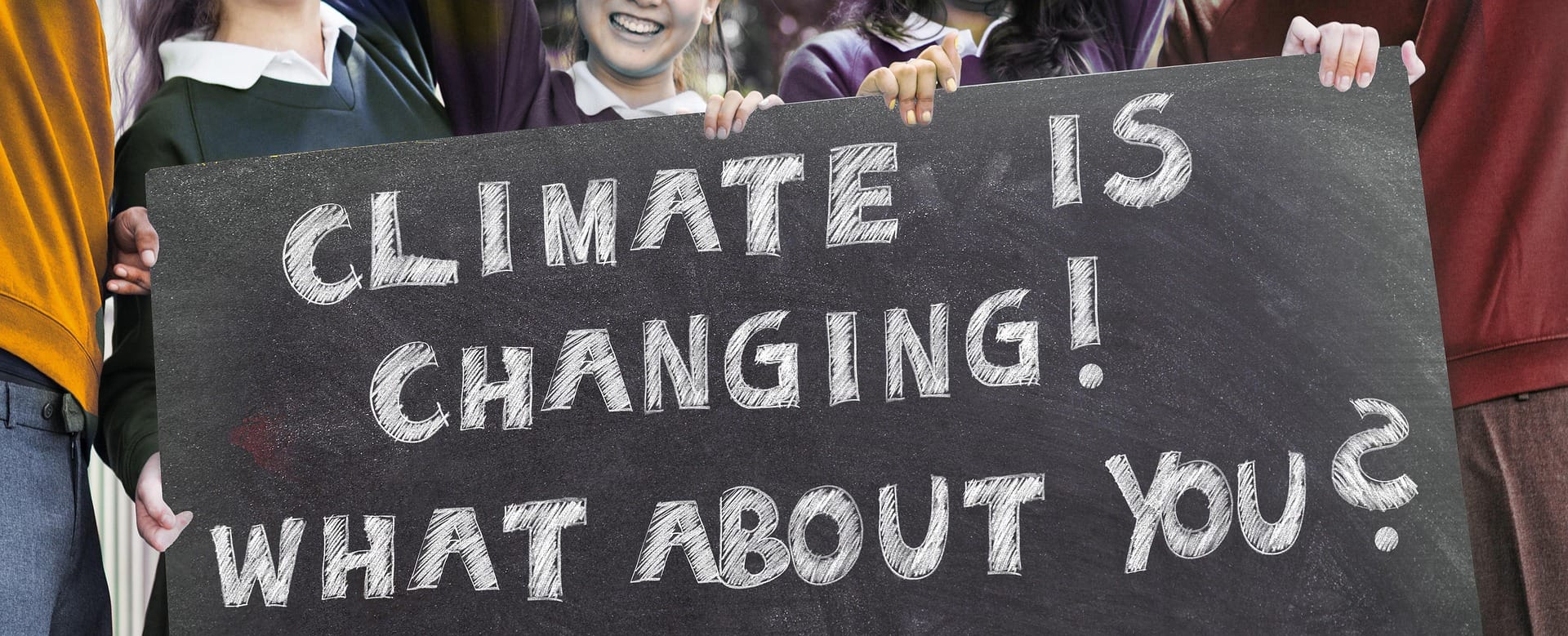Lead the Charge

Tech Workers Fighting for Sustainability
The tech industry has long been at the forefront of innovation, but in recent years, another movement has been growing within its ranks: employee activism [1]. Employee activism means that employees are using their voices to advocate for meaningful change within their companies. This spans a range of ethical issues, from data privacy and misinformation to labor rights and workplace discrimination. One of the most pressing concerns, however, is environmental sustainability, as these employees recognize that their companies hold immense power to influence global environmental policies.
Despite current setbacks related to the re-election of Donald Trump as US President [2] employee activism remains a powerful force in the fast-paced tech world. Let us have a look at some recent initiatives and achievements of tech workers fighting for sustainability before I provide some guidance on how to become an employee activist for sustainability in your own company.
It is no secret that corporations play a significant role in climate-harming emissions and environmental degradation. However, they also hold immense power to drive meaningful change [3]. Unfortunately, most companies have failed to take decisive action. This is where employees step in. For about 50% of Millennials and Gen Z, climate change is a major concern that influences their career choices, and they are looking for ways to change their companies for the better [4]. In particular, in North American tech companies, employees are organizing, mobilizing, and pressuring their employers to take action on sustainability.
For example, take Drew Wilkinson, a former punk band leader turned Microsoft employee, who co-founded the company’s sustainability community which comprised over 10,000 members by 2023 [5]. Similarly, Google’s Zoe Samuel helped launch the Anthropocene grassroots climate solutions community, which now boasts more than 4,000 members working on initiatives like Google Sunroof, a project that promotes solar energy adoption [6].
On the more radical end, former Amazon employees Maren Costa and Emily Cunningham took their activism beyond internal advocacy [7]. Frustrated by their company’s lack of action, they helped organize a walkout of 3,000 Amazon employees worldwide and publicly criticized Amazon’s climate policies at the 2019 Fridays for Future demonstration in Seattle. Their efforts contributed to Amazon’s decision to announce its Climate Pledge, committing to 100% renewable energy by 2030 and net-zero carbon operations by 2040.
Then there are whistleblowers like Frances Haugen, who in 2021 exposed Facebook’s internal documents revealing the company’s awareness of its role in spreading misinformation, including climate-related falsehoods [8]. Similarly, Stuart Johnson, a senior engineer at Volkswagen, informed U.S. authorities about VW’s emissions fraud, shaking the German automotive industry to its core [9].
It’s no coincidence that many of these activists come from tech companies. Many employees in the industry live in progressive areas, have democratic values, and join their companies with the belief that technology could be a force for good. However, as they witness corporate decisions prioritizing profits over societal benefits and planetary well-being, many have become disillusioned. Tech workers—often well-paid, highly skilled, and deeply embedded in their companies’ core operations—have both the leverage and the motivation to demand change.
How to Become a Tech Worker Employee Activist?
As a tech professional, you have the opportunity to be part of this movement and become an employee activist for sustainability yourself. If you are ready to take action, here are key strategies to make your efforts impactful (see [10] for detailed theoretical basics and research on the matter).
Build a team: No matter how ambitious your goals, you do not have to go it alone. Building a team helps distribute the workload, provides emotional support, and strengthens resilience. A collective effort is harder to ignore and more likely to achieve lasting change. Surround yourself with like-minded colleagues who share your vision and can help strategize, celebrate successes, and navigate setbacks together.
Identify Issues Worth Fighting For: Identify relevant causes to fight for in your company. These are often the ones where your business has the strongest negative environmental impact. However, not all issues are equally easy to tackle. Some initiatives offer quick wins that build momentum, while others, such as reducing a company’s carbon footprint or changing hiring policies,require long-term commitment. Focus on balancing feasibility and effectiveness. Early wins can generate credibility and confidence, paving the way for larger, more complex changes.
Understand Power Dynamics: Tech companies are driven by both formal structures and informal influence. Knowing how decisions are made—and who holds the power—can help you craft a more effective strategy. Some initiatives may gain traction by working within existing systems, while others may require pushing boundaries or challenging the status quo. Recognizing when to negotiate, when to escalate, and when to push back is key to making an impact.
Be Creative: Employee activism has no one-size-fits-all playbook, so thinking outside the box is essential. Look for innovative ways to engage colleagues, mobilize resources, and create compelling narratives that drive action. Whether it’s a grassroots petition, a well-researched proposal, or a high-profile internal campaign, tailor your approach to your company’s culture and unique challenges.

Win Over Decision-Makers: Executives and managers have a major influence on company policy, so gaining their support can accelerate change. Decision-makers respond to different tactics—some to data-driven arguments, others to employee pressure, and some to external reputational concerns. Frame your advocacy in a way that aligns with their priorities, and always come prepared with solutions, not just problems.
Practice Persistence: Change rarely happens overnight, and setbacks are inevitable. Stay grounded by keeping clear priorities, gathering strong data, and remaining adaptable. Regularly take a step back to assess your progress, refine your approach, and ensure your company isn’t leading you in circles without real action. The ability to stay the course while adjusting tactics is crucial for long-term success.
Build a Broader Support Network: Beyond your immediate team, a larger network of supporters, inside and outside the company, can provide additional strength and stability. Engage with industry groups, advocacy organizations, and professional networks that share your goals. A movement that extends beyond your company creates accountability, making it harder for leadership to ignore your efforts.
Take Care of Yourself: Balancing a demanding tech job with activism can be exhausting. While driving change is rewarding, burnout is real. Make sure to set boundaries, find time to recharge, and seek support when needed. Sustainable activism requires sustainable activists: your well-being is just as important as the cause you’re fighting for.
The fight for a sustainable future is not just happening in government negotiations or activist protests; it is happening right inside the offices of the world’s biggest tech giants. And it is being led by tech workers who act in line with their values. By building a strong team, understanding corporate power structures, and maintaining persistence, by becoming an employee activist, you can help shape a more responsible and forward-thinking industry.
References
[1] Edwards, Jackie (2024, June 10). Employee activism on the rise: The most important issues to employees and how businesses can address them. Diversity Dashboard.
[2] Weise, Karen, Grant, Nico, & Isaac, Mike (2024, November 9). Big Tech’s Hotbeds of Employee Activism Quiet After Trump’s Victory. The New York Times.
[3] Henderson, Rebecca (2020). Reimagining Capitalism in a World on Fire (Illustrated edition). New York: PublicAffairs.
[4] Deloitte (2024). The Deloitte Global 2024 Gen Z and Millennial Survey.
[5] Wilkinson, Drew (2023). How a punk-rocking paralegal harnessed employee power to green Microsoft. Environmental Defense Fund, Degrees Podcast Season 6, Episode 1.
[6] Samuel, Zoe (2024, February 26). Climate Chat: Transition to Climate With Zoe Samuel. Climate Chat.
[7] Garcia, Ahiza (2019, September 20). Amazon workers walk out to protest climate change inaction | CNN Business. CNN Business.
[8] Roth, Emma (2022, February 20). Facebook whistleblower accuses company of failing to address climate change misinformation. The Verge.
[9] Ewing, Jack (2017). Faster, Higher, Farther: The Volkswagen Scandal (Illustrated edition). New York: W. W. Norton & Company.
[10] Heucher, Katrin, Alt, Elisa, Soderstrom, Sara, Scully, Maureen, & Glavas, Ante (2024). Catalyzing action on social and environmental challenges: An integrative review of insider social change agents. Academy of Management Annals, 18(1), 295–347.

